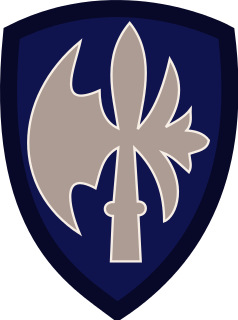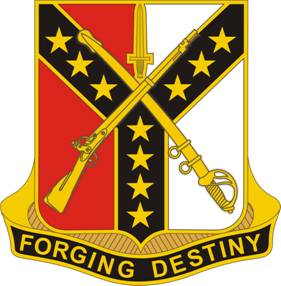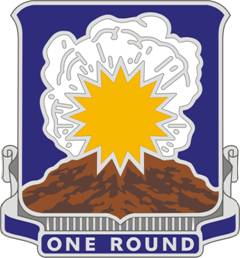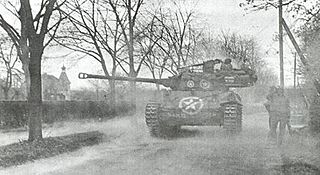| 809th Tank Destroyer Battalion | |
|---|---|
| Active | 1942–1945 |
| Disbanded | 1945 |
| Country | United States |
| Allegiance | Army |
| Part of | Independent unit |
| Equipment | M18 Hellcat M36 tank destroyer |
The 809th Tank Destroyer Battalion was a tank destroyer battalion of the United States Army active during the Second World War.

The tank destroyer battalion was a type of unit used by the United States Army during World War II. The unit was organized in one of two different forms—a towed battalion equipped with anti-tank guns, or a mechanized battalion equipped with armored self-propelled guns. The tank destroyers were formed in response to the German use of massed formations of armored units early in WW2. The tank destroyer concept envisioned the battalions acting as independent units that would respond at high speed to enemy tank attacks. In this role they would be attached to divisions or corps. In practice, they were usually attached to infantry divisions. Over one hundred battalions were formed, of which more than half saw combat service. The force was disbanded shortly after the end of the war when the concept had been shown to be obsolete.

The United States Army (USA) is the land warfare service branch of the United States Armed Forces. It is one of the seven uniformed services of the United States, and is designated as the Army of the United States in the United States Constitution. As the oldest and most senior branch of the U.S. military in order of precedence, the modern U.S. Army has its roots in the Continental Army, which was formed to fight the American Revolutionary War (1775–1783)—before the United States of America was established as a country. After the Revolutionary War, the Congress of the Confederation created the United States Army on 3 June 1784 to replace the disbanded Continental Army. The United States Army considers itself descended from the Continental Army, and dates its institutional inception from the origin of that armed force in 1775.
The battalion was activated on 18 March 1942, and remained in the United States until November 1944, when it was moved to the United Kingdom. It arrived in France on 20 January 1945, equipped with M18 Hellcat tank destroyers. It was attached to the 8th Armored Division on 9 February, and fought in the crossing of the Roer.

The M18 Hellcat was an American tank destroyer of World War II, also used in the Korean War. It was the fastest U.S. tank on road. The speed was attained by keeping armor to a minimum, using the innovative Torqmatic automatic transmission, and by equipping the relatively light vehicle with the same radial engine used on the much larger Sherman tank.

The 8th Armored Division was an armored division of the United States Army that served in the European Theater of World War II.
On 20 March, it was attached to the 79th Infantry Division, crossing the Rhine on the 27th, and was then attached to the 95th Infantry Division for the fighting around the Ruhr Pocket in April before being returned to the 8th Armoured on 13 April. During this month, it converted to M36 tank destroyers. In late April it saw action in the Harz Mountains, finishing the war in central Germany.

The 79th Infantry Division was an infantry formation of the United States Army Reserve in World Wars I and II.

The 95th Infantry Division was an infantry division of the United States Army. Today it exists as the 95th Training Division, a component of the United States Army Reserve headquartered at Fort Sill, Oklahoma.

The Ruhr Pocket was a battle of encirclement that took place in April 1945, on the Western Front near the end of World War II, in the Ruhr Area of Germany. Some 317,000 German troops, consisting mostly of unarmed Volksturm militia and Hitlerjugend units were taken prisoner along with 24 generals. The Americans suffered 10,000 casualties including 2,000 killed or missing.









